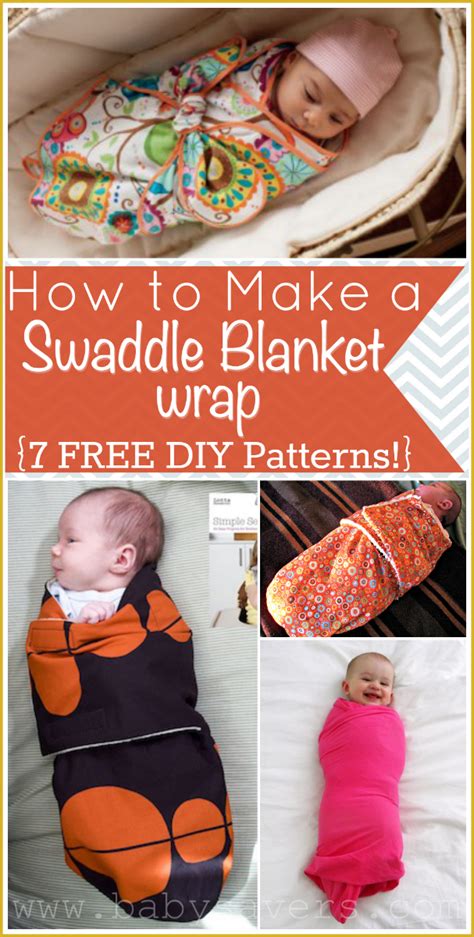Sew a Swaddle, Soothe Your Little One: Easy DIY
Swaddling your newborn can be a game-changer, offering comfort, security, and potentially better sleep for both you and your baby. While store-bought swaddles are readily available, sewing your own offers a deeply personal touch, allows for customization, and can be surprisingly easy. This guide will walk you through creating a simple, effective DIY swaddle.
Why Sew Your Own Swaddle?
There are several compelling reasons to consider sewing your own baby swaddle:
- Customization: Choose your favorite fabrics, patterns, and sizes to perfectly match your baby's needs and your aesthetic preferences. You can select soft, breathable materials like cotton muslin or flannel for optimal comfort.
- Cost Savings: While seemingly small, the cost of swaddles adds up, especially if you need several. Sewing your own allows you to create multiple swaddles at a fraction of the retail price.
- Unique Gift: A handmade swaddle makes a truly special and thoughtful gift for new parents.
- Fabric Selection: You have complete control over the fabric's quality and safety, ensuring it's gentle on your baby's delicate skin and free from harmful chemicals.
What You'll Need:
- Fabric: Approximately 1 yard of soft, breathable fabric (cotton muslin or flannel are excellent choices). Consider a pre-washed fabric to prevent shrinkage after washing.
- Scissors: Sharp fabric scissors for clean cuts.
- Measuring Tape: Accurate measurements are crucial for a properly fitting swaddle.
- Pins: To secure fabric pieces before sewing.
- Sewing Machine: While hand-sewing is possible, a sewing machine significantly simplifies the process.
- Thread: Matching the fabric color or using a coordinating color.
- Iron and Ironing Board: To press seams for a neat finish.
Simple Swaddle Pattern (35" x 35"):
This pattern creates a square swaddle suitable for newborns and smaller infants. Adjust the size as needed for older babies.
Step 1: Cut the Fabric
Cut a square of fabric measuring 35 inches by 35 inches.
Step 2: Hemming (Optional but Recommended)
For a professional finish and to prevent fraying, hem all four sides of the square. You can use a simple double fold hem or a serger if you have one. This step is especially important with fabrics that fray easily.
Step 3: (Alternative: No-Sew Option)
If you don't have a sewing machine, you can create a no-sew swaddle using fabric glue, bias tape, or even fabric adhesive. However, sewing provides a more durable and long-lasting swaddle.
How to Use Your Swaddle:
- Lay the swaddle flat with a corner pointing upwards.
- Place your baby on the swaddle with their shoulders aligned with the top edge.
- Bring one side of the swaddle across your baby's body and tuck it under their back.
- Bring the other side across and tuck it securely under their back, ensuring the fabric is snug but not too tight.
- Fold the bottom corner up over your baby's feet.
Important Safety Note: Always ensure your baby's hips and legs have room to move freely and that the swaddle isn't too tight around their neck or chest. Never swaddle a baby who can roll over on their own.
Addressing Common Questions:
What fabrics are best for swaddling?
Cotton muslin and flannel are popular choices due to their softness, breathability, and ease of care. Avoid fabrics that are too heavy or that don't breathe well.
How big should a swaddle be?
A good starting point is a 35" x 35" square for newborns, but you can adjust the size as your baby grows.
Can I use old shirts or other fabric scraps?
While you can use soft, clean fabric scraps, ensure they are large enough for a proper swaddle and are free from any potentially harmful embellishments or buttons.
How do I wash my handmade swaddle?
Always wash your swaddle before use and follow the care instructions for your chosen fabric. Generally, machine washing on a gentle cycle with cold water and tumble drying on low heat are safe options.
By following these simple steps, you can create a comfortable and personalized swaddle for your little one. Enjoy the satisfaction of creating something special and practical for your baby! Remember, safety always comes first, so always supervise your baby while swaddled.

